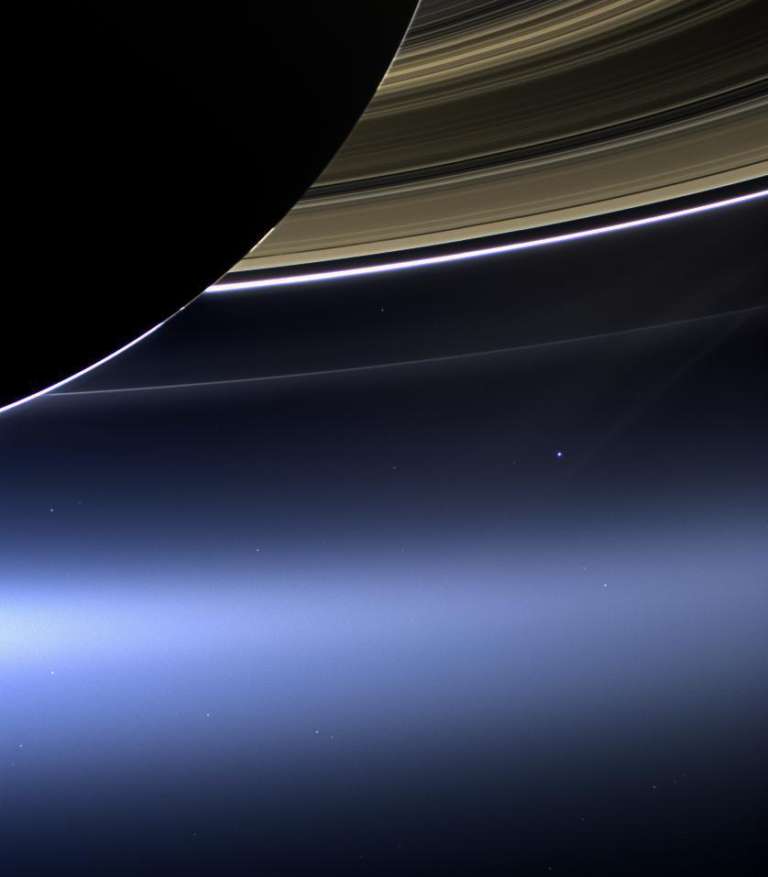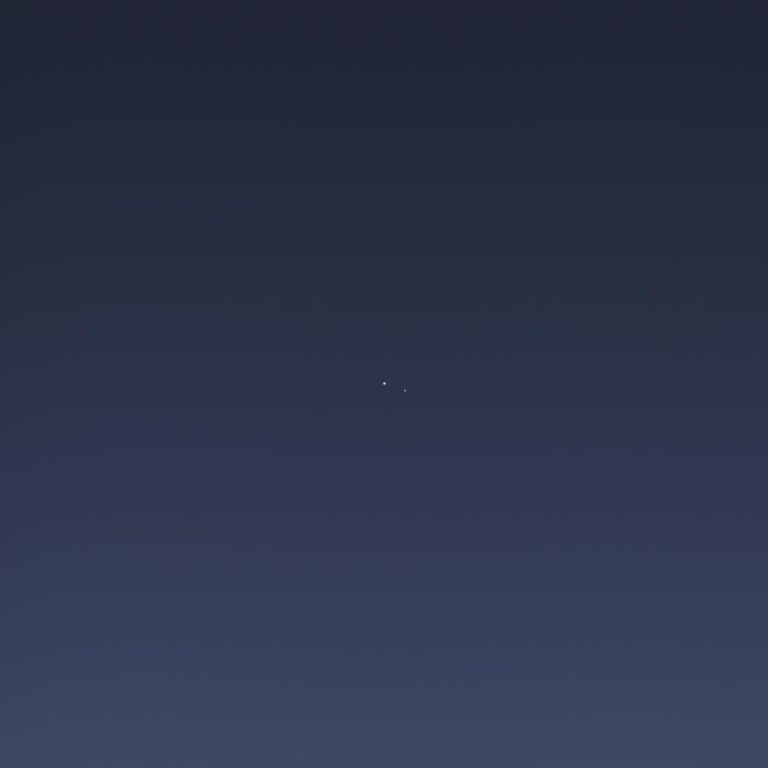Emily Lakdawalla • Jul 23, 2013
Pretty picture: Looking backward
Here it is: the view from Saturn of our Earthly home, one and a half billion kilometers away. We see Earth and the Moon through a thin veil of faintly blue ice crystals, the outskirts of Saturn's E ring. Earth is just a bright dot -- a bit brighter than the other stars in the image, but no brighter than any planet (like Saturn!) in our own sky.
Of course, Earth isn't the only thing in the photo; we have a nearly 180-degree-phase Saturn and its rings, too. Sunlight is being refracted through Saturn's uppermost atmosphere -- that's what makes the sliver of brightness at lower left -- but the sliver of brightness breaks up as you follow it counterclockwise around the edge of Saturn's disk. That's where Saturn's own rings are casting shadows on the planet, so there's no sunlight falling on the sun-facing side to be refracted through the sky.

This is a wide-angle camera photo. There was a narrow-angle camera sequence, too. Unfortunately, the images appear to have been hopelessly overexposed (creating the rays visible in, for example, this photo), so they used the color from the wide-angle photos to colorize one of the narrow-angle camera images, something that's standard operating procedure in spacecraft image processing:

One paragraph in the caption released with a zoomed-in version of the Earth-Moon narrow-angle camera image caught my eye. It said: "Image scale on Earth is 5,382 miles (8,662 kilometers) per pixel. The illuminated areas of neither Earth nor the moon are resolved here. Consequently, the size of each 'dot' is the same size that a point of light of comparable brightness would have in the narrow angle camera." Of course, Earth is larger than 8,662 kilometers in diameter: its actual diameter is nearly 13,000 kilometers across. So shouldn't it be more than one pixel, if only slightly?
It's not, because Earth is closer to the Sun than Saturn is, and consequently didn't appear full. In fact, it only a bit more than half-phase at the time. Its light may span more than one pixel, but there's less than a pixel's worth of sunlit planet visible. Here is a lovely comparison photo assembled by the Planetary Habitability Laboratory using image data from Earth's weather satellites acquired at about the same time, from about the same angle, as the Cassini photo -- only from much, much closer. The GOES image was grayscale; it has been colorized with data from NASA's Visible Earth project using the Planetary Habitability Laboratory's Scientific Exoplanets Renderer software.
They released a similar photo of Earth from the perspective of the MESSENGER photo I blogged about yesterday; I've updated the blog entry with that picture.
Support our core enterprises
Your support powers our mission to explore worlds, find life, and defend Earth. You make all the difference when you make a gift. Give today!
Donate

 Explore Worlds
Explore Worlds Find Life
Find Life Defend Earth
Defend Earth

